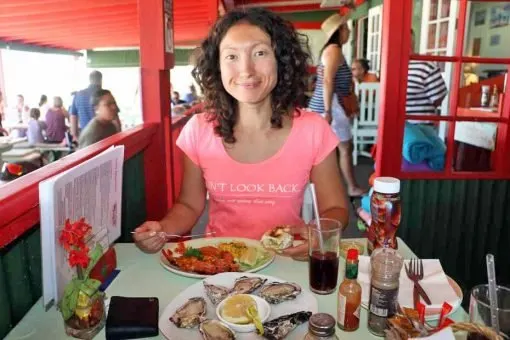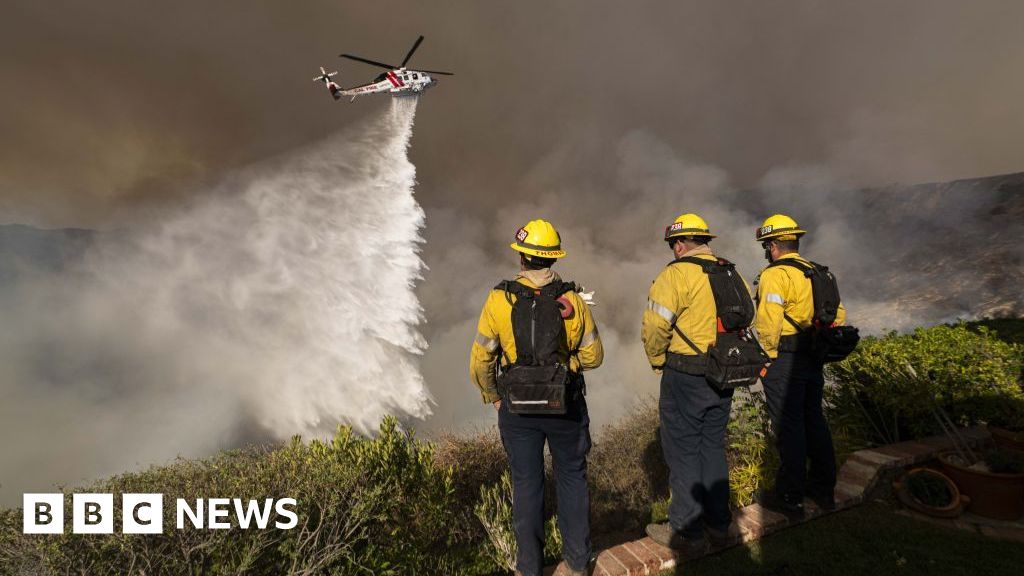The Portuguese Camino from Porto has 3 different routes: Central, Coastal, and Litoral Way. The last two are very similar. All three routes merge in Redondela, Spain. From Redondela there is only one route to Santiago de Compostela (except for the Spiritual Variant, an optional route from Pontevedra to Pontecesures).
The Central Route and the Coastal/Litoral Way are very different trails. The Coastal and Litoral Way have the same stages, except for the first stage from Porto to Vila do Conde. The main difference is that the Coastal Route sometimes goes inland and the Litoral Way follows the coast.
Note that the Lisbon to Porto part of the Portuguese Camino has only one route.

How long is the walk to Santiago on the Coastal and Central Route?
The total distance on the Central Route is 243,5 km/151 mi. It takes on average 10-13 days.
The total distance from Porto to Santiago on the Coastal Route is 274 km/170 mi. It takes 12-15 days.
If you incorporate the Litoral Way into your coastal walk your total distance will be between 280 km/174 mi and 290 km/180 mi.
Which route has more pilgrims?
The Portuguese Camino is one of the most popular Camino de Santiago routes after the Camino Frances. According to the Pilgrim’s Reception Office in Santiago in 2023 – 32% of all pilgrims (141 465 people) completed the Portuguese route. 37% (52 747) walked the Coastal Route and 63% (88 718) walked the Central Route.
Walking surface on the Central and Coastal Route
Both routes like any Camino de Santiago mostly go on hard surfaces e.g. tar roads, asphalt, and cobblestone.
In the Portuguese part of the Central Route, you walk a lot on cobblestones (the famous calçada portuguesa). Cobblestone streets in Portugal are everywhere you’ll notice it once you start walking. In Spain, you find cobbled streets only in the historical centers.
On the Central Route, you walk
- 143 km/89 mi on asphalt/tar;
- 42 km/26 mi on cobblestones;
- 57 km/35,4 mi on footpath/gravel road.


The Coastal Route has fewer cobblestones and more boardwalks.
On the Coastal Route, you walk
- 162,4 km/100 mi on asphalt/tar;
- 29 km/18 mi on cobblestones;
- 60,6 km/37,6 mi on a footpath/gravel road;
- 27 km/16,7 mi on boardwalks;
- 1 km/0,6 mi on the beach.
Historical towns on the routes
The Central Route has more interesting historical places. Most of my favorite towns on the Portuguese Camino are on the Central Route; Ponte de Lima, Barcelos, Valença, and Tui. These towns are relatively small with a beautiful historical center. The towns on the Central Route are smaller than those on the Coastal Route. You never walk for many kilometers trying to get out of the city.
On the Coastal Route, the cities are bigger e.g. Vila do Conde, Póvoa de Varzim, Viana do Castelo, and Vigo. There is always a lot of traffic, industrial areas, many people, and noise. These cities have historical centers but you walk a lot through modern parts.


Which route has more public albergues?
Both routes on the stretch between Porto and Redondela (the routes merge in Redondela) have about the same number of public/municipal albergues. There are 13 public albergues on the Central Route and 12 public albergues on the Coastal Route. The Coastal Route used to have fewer albergues but due to its growing popularity, more public albergues have been opened recently.
The number is almost the same but the density is different. 13 public albergues for the first 6 stages of the Central Route vs 12 albergues for the first 9 stages of the Coastal Route. You can plan your walk on the Coastal Route to stay every night in a public albergue for every stage except stages 6 and 7. There are no public albergues on the stretch between A Guarda and Vigo. There are several private albergues.
Find out more about albergues on the Camino de Santiago.


On the Central Route, you can find public albergues in
- Vairão (1st stage)
- São Pedro de Rates (2nd stage)
- Pedra Furada (2nd stage)
- Barcelos (2nd stage)
- Portela de Tamel (3rd stage)
- Ponte de Lima (3rd stage)
- Rubiães (4th stage)
- Valença (5th stage)
- Tui (5th stage)
- O Porriño (6th stage)
- Veigadaña (6th stage)
- Mos (6th stage)
- Redondela (6th stage)
On the Coastal Route public albergues can be found in
- Labruge (1st stage)
- Vila Chã (1st stage)
- Vila do Conde (2nd stage)
- Póvoa de Varzim (2nd stage)
- Aguçadoura (2nd stage)
- Marinhas (3rd stage)
- Castelo do Neiva (4th stage)
- Viana do Castelo (4th stage)
- Caminha (5th stage)
- A Guarda (5th stage)
- Vigo (8th stage)
- Redondela (9th stage)
The scenery on the Coastal vs Central Route
The Central Route offers rural scenery, forests, small towns, and villages. The Central Route goes through more remote less touristy areas than the Coastal Camino. I liked the towns and villages on the Central Route more. The route has no alternative trails which makes it easier to navigate.


On the Coastal Route, the sea and beaches are the main scenery. You walk past many cities and biggish towns. And sometimes you get to walk through the countryside or forest. Two routes of the Portuguese Camino go along the coast; the official Coastal Route and the alternative Litroal Way (Senda Litoral). Sometimes both routes follow the same trail, and sometimes they split. The Litoral Way goes next to the coast, the Coastal Route sometimes goes inland. It’s nice to have an alternative but on the other hand, you often have to decide which route to choose and it can be stressful for some people.


Which route has more hills?
The Central Route has more hills and steep ascents and descents. If you don’t like walking hills I’d suggest choosing the Coastal Route.
On the Central Route from Porto to Redondela (the first 6 stages) the total ascent is 2536 m (422 m per day on average) and the descent is 2588 m (431 m per day on average).
On the Coastal Route from Porto to Redondela (the first 9 stages) the accumulated ascent is 2284 m (253 m per day on average) and the descent is 2319 m (256 m per day on average).
In Redondela both routes merge from there to Santiago they follow the same trail.
The difference in accumulated ascent and descent is small but the Coastal Route is longer so your daily ascents/descents are lower than on the Central Route.
If you walk the Litoral Way that mostly goes along the coast you’ll have fewer hills than on the Coastal Route.


My favorite route
It’s a difficult question because both routes have something special. I’ve walked both routes twice and the first time I liked the Coastal Route more because of the sea scenery and beaches.
The second time I enjoyed the Central Route more because now we live in Portugal near the beach and can enjoy the coastal scenery daily so the forest and countryside are more attractive.
I do like towns on the Central Route more than the Coastal Route. On the other hand, I love walking along the rugged coastline on the Coastal Route. The best forest scenery, in my opinion, is in the last part of the Portuguese Camino between Redondela and Santiago so regardless of the route you walk you get to see that part.


Choosing the route on the Portuguese Camino
Reasons to choose the Coastal Route/Litoral Way
If you want to walk along the coast and relax on sandy beaches.
You want to walk less on cobblestones/asphalt and more on boardwalks.
If you walk in May or September (the busiest months on the Portuguese Camino) and want to see fewer pilgrims. Only 37% of pilgrims choose the Coastal Route.
Reasons to choose the Central Route
If you like forests, historic towns, and the countryside.
You want to walk during the peak summer (July and August) and don’t want to see thousands of tourists. The beach towns on the Coastal Route get extremely busy during the summer holiday.
If you can’t decide which one to choose you can combine both routes, start walking on the Coastal, and switch to the Central Route in Caminha. See the explanation below.


Combining the Coastal and Central Route
There are different ways of combining the two routes. The most popular option is to walk from Porto on the Coastal/Litoral route, from Caminha (the Coastal Route) walk to Tui (the Central Route), and switch to the Central Route. There is a connecting route from Caminha to Valença/Tui. I think it’s the best option to combine both routes of the Portuguese Camino.
It’s possible to do it the other way around; start walking on the Central Route and then switch to the Coastal Route. It’s not a popular option because you walk on the Coastal Route for only 4 days. The Coastal Camino merges with the Central Route in Redondela.
You can walk on the Litoral Way or the Coastal Route from Porto to Vila do Conde and then switch to the Central Route using the connecting trail from Vila do Conde to Rates.


Luggage delivery on the routes
It’s possible to arrange luggage delivery on both routes. Several companies offer the service. Some of the main ones are Tui Trans, Correos, and Pilbeo. The price is 7 euros per luggage item per stage.
It’s possible to send your extra luggage from Porto directly to Santiago and keep it in a storage facility until your arrival. You can check that option with the luggage delivery companies above.
Walking the last 100 km to Santiago on the Central vs Coastal Route
Walking the last 100 km on any of the Camino de Santiago routes is required to get the Compostela certificate.
Traditionally the last 100 km on the Central Route of the Portuguese Camino starts in Tui. The exact distance from Tui is 117 km/72,7 mi. If you don’t want to walk more than 100 km you can start in Porriño, a small town 103 km/64 mi from Santiago.
On the Coastal Route the last 100 km starts in Vigo. You walk only the first day on the Coastal Route from Vigo to Redondela. In Redondela the Coastal and the Central Route merge. You can extend your coastal walk by combining it with the Spiritual Variant, an optional route from Pontevedra to Padron (Pontecesures).


The Litoral Way of the Portuguese Camino
The Litoral Way or Senda Litoral is the third route of the Portuguese Camino from Porto. Except for the first stage from Porto to Vila do Conde it coincides with the Coastal Route. The main difference is that the Litoral Way follows the coast as much as possible while the Coastal Route often goes inland.
The Litoral Way is often not marked but is easy to follow because you just walk along the coast. Sometimes even on the Litoral Way, you walk inland to cross a river, bay, or port.
Portuguese Camino de Santiago planning resources
Please follow and like us:


The pretty half of Stingy Nomads, responsible for all our land adventures (hiking, climbing, walking the Camino) and following them write-ups. Alya loves walking since she was a child, she prefers to walk 1000 km with a backpack rather than to do a 10 000 km road trip (actually any road trip). Alya is a big fan of Latin America, the Spanish language, and dancing. Every time we go away she desperately misses our dog Chile.




















Discussion about this post